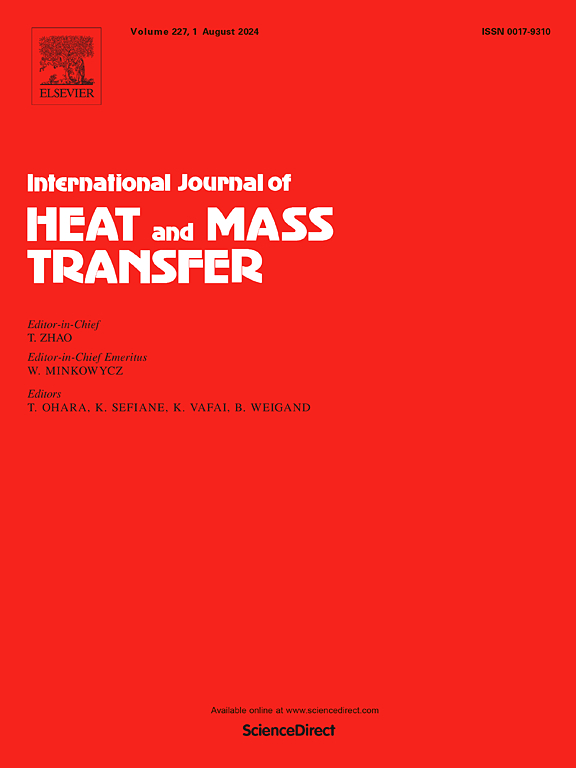Experimental investigation on flow boiling heat transfer of R1233zd(E) in parallel microchannel heat sink with variable channel widths
IF 5
2区 工程技术
Q1 ENGINEERING, MECHANICAL
International Journal of Heat and Mass Transfer
Pub Date : 2025-03-20
DOI:10.1016/j.ijheatmasstransfer.2025.126986
引用次数: 0
Abstract
In this study, a novel parallel microchannel heat sink with variable channel widths was proposed to confront the issue of flow maldistribution. With R1233zd(E) as the working fluid, subcooled flow boiling experiments were conducted in the microchannel heat sink with variable and uniform widths under the inlet subcooling of 5–8 ℃ and the mass flux and heat flux ranges of 500–2000 kg/m2 s, 0–180 kW/m2, respectively. The results indicated that the two-phase flow pattern in the microchannel with variable channel widths (VWMC) showed a better distribution uniformity than the one with uniform channel width (CWMC). The boiling curve in the two test sections showed that the onset of nucleate boiling (ONB) is incipient earlier in VWMC due to the improved flow uniformity, meanwhile it had lower wall superheat with the increase of heat flux. The deviation of boiling curves at local positions was also smaller in VWMC. Furthermore, the overall heat transfer coefficients (HTCs) in VWMC were consistently higher than those in CWMC across all operating conditions, with a maximum improvement of up to 60%. The improvements of HTC were also observed at various locations in different channels of VWMC along the flow direction. The pressure drop of VWMC, however, was generally higher than that in the CWMC, with the maximum penalty of 39%. Meanwhile, the pressure drop fluctuations maintained at a low level of ±0.6 kPa under most conditions, presenting optimal two-phase flow stability.
求助全文
约1分钟内获得全文
求助全文
来源期刊
CiteScore
10.30
自引率
13.50%
发文量
1319
审稿时长
41 days
期刊介绍:
International Journal of Heat and Mass Transfer is the vehicle for the exchange of basic ideas in heat and mass transfer between research workers and engineers throughout the world. It focuses on both analytical and experimental research, with an emphasis on contributions which increase the basic understanding of transfer processes and their application to engineering problems.
Topics include:
-New methods of measuring and/or correlating transport-property data
-Energy engineering
-Environmental applications of heat and/or mass transfer

 求助内容:
求助内容: 应助结果提醒方式:
应助结果提醒方式:


